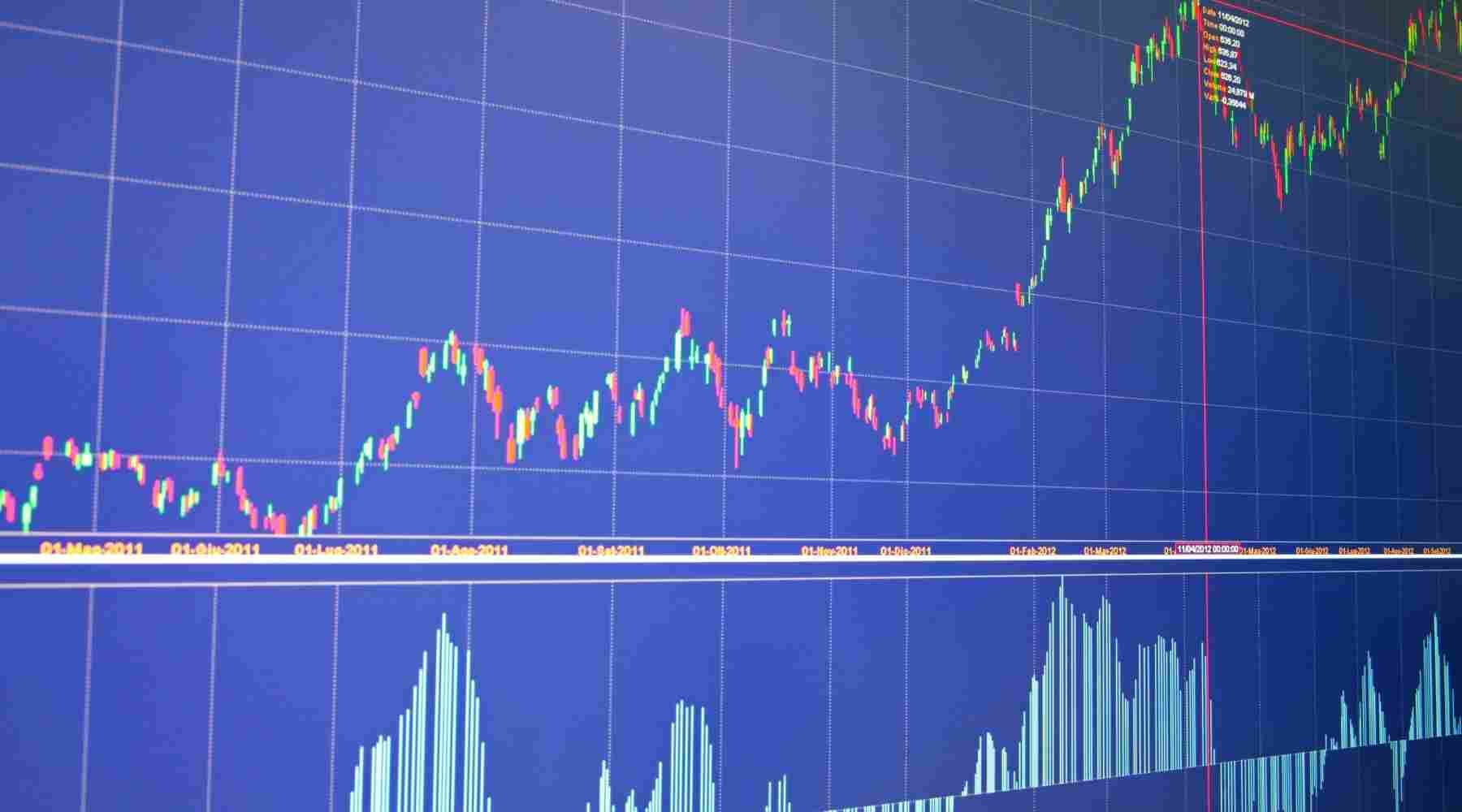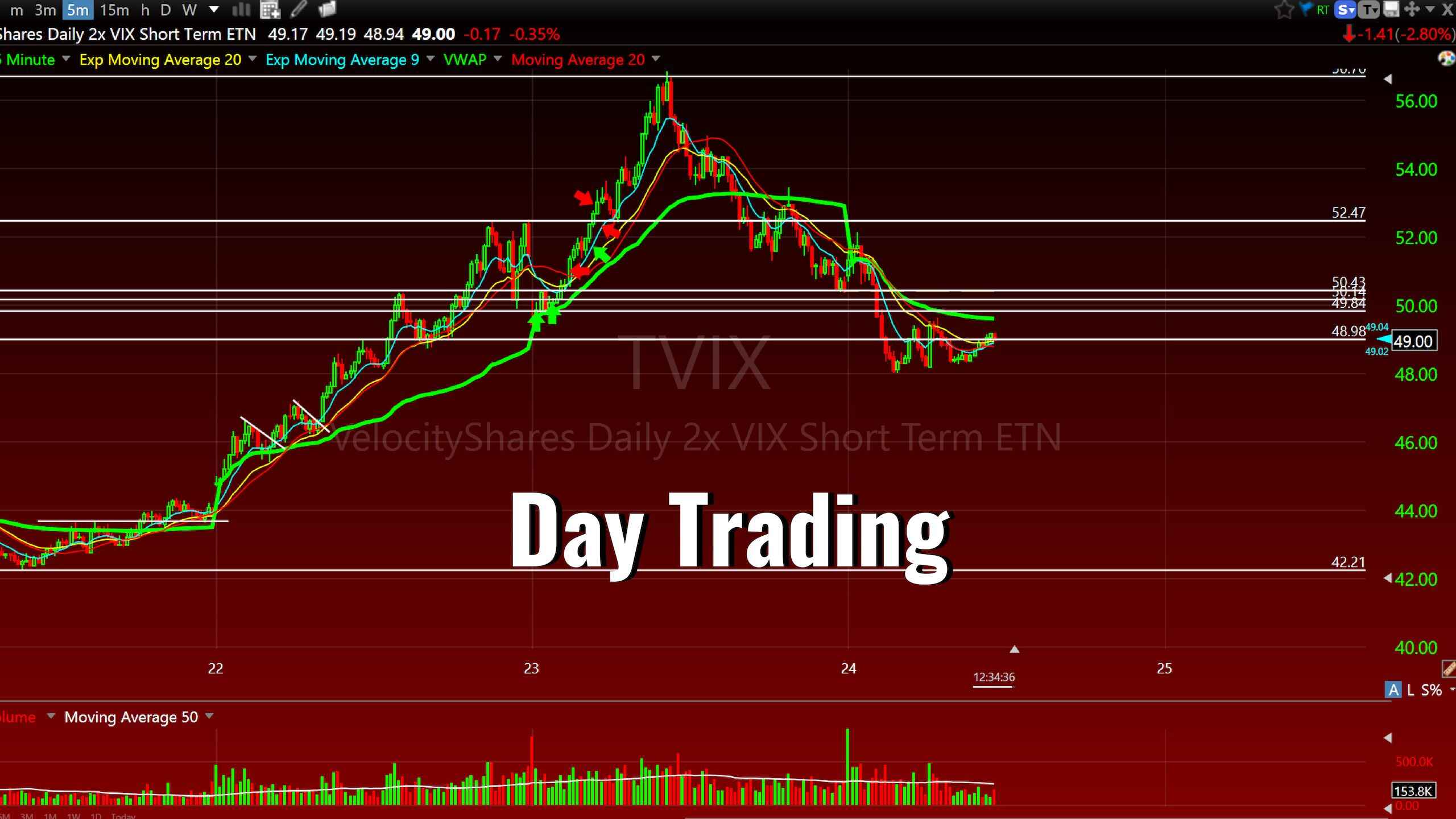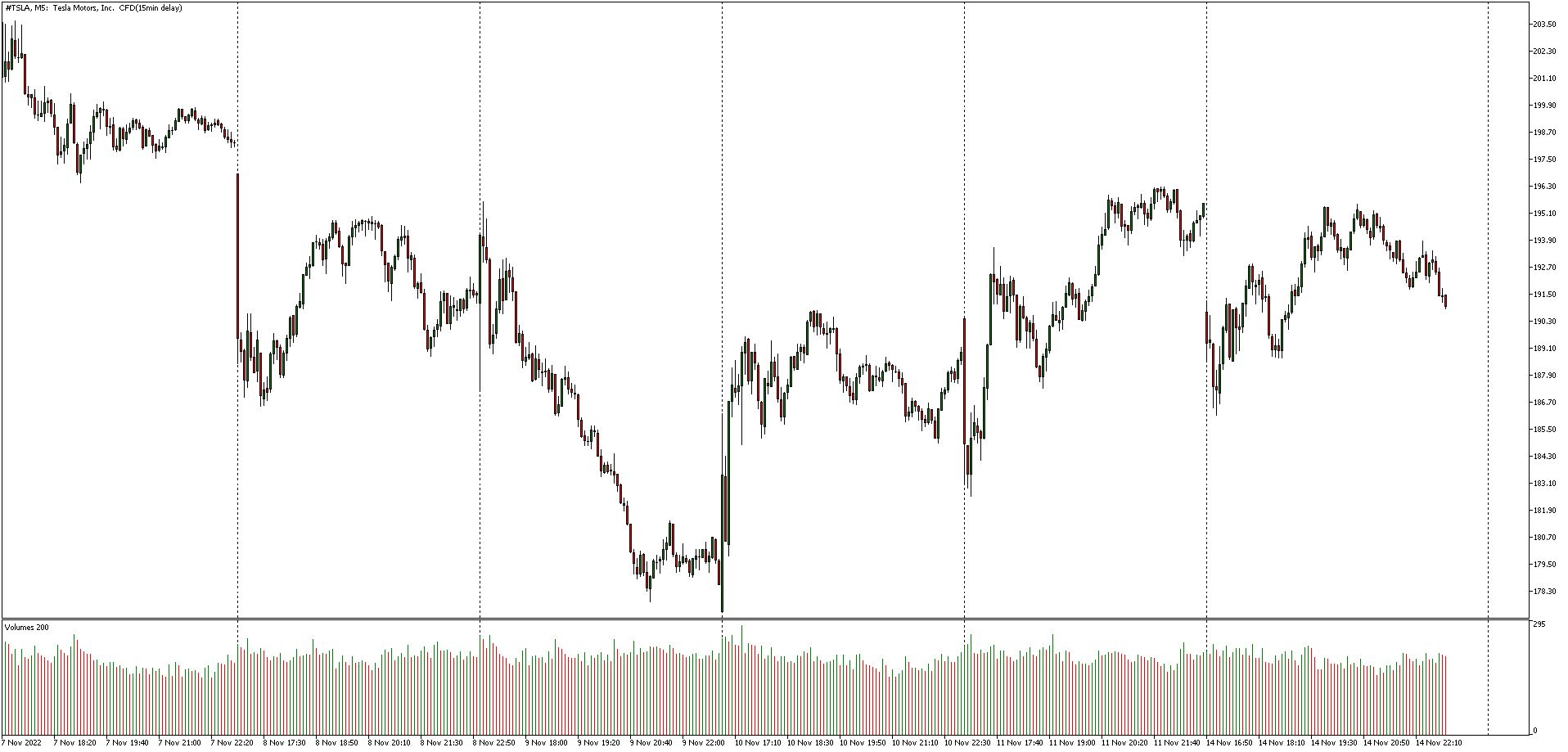Introduction
Welcome to the exciting world of day trading, where individuals have the opportunity to make money by buying and selling financial instruments such as stocks, currencies, and commodities on the same day. Day trading has gained popularity in recent years thanks to its potential for high returns and the accessibility provided by online trading platforms.
Day trading involves making quick investment decisions, capitalizing on short-term price fluctuations within the same trading day. It requires careful analysis, strategic decision-making, and a solid understanding of market trends. While day trading can be highly profitable, it also comes with inherent risks and requires discipline, knowledge, and the ability to manage emotions.
In this article, we will guide you through the basics of day trading, helping you get started on your journey to making money in the financial markets. We will explore the key steps and strategies needed to succeed, as well as common mistakes to avoid.
Before diving into the world of day trading, it’s important to note that success is not guaranteed, and it’s essential to approach trading with a realistic mindset and a well-defined plan. While some individuals have achieved significant financial success through day trading, it’s crucial to understand that it takes time, dedication, and continuous learning to develop the skills necessary to consistently make profits.
Whether you’re a beginner looking to get started or an experienced trader looking for more insights, this guide will provide you with valuable information and resources to enhance your day trading journey.
What is Day Trading?
Day trading is a trading strategy where individuals buy and sell financial instruments within the same trading day, aiming to profit from short-term price fluctuations. Unlike long-term investing, which focuses on holding investments for an extended period, day trading involves making quick decisions based on intraday market movements.
Day traders often trade stocks, currencies (forex), options, or commodities, using various strategies and techniques to identify potential opportunities for profit. The goal of day trading is to take advantage of small price movements and generate profits on a daily basis.
One of the key characteristics of day trading is the use of leverage, which allows traders to control larger positions with a smaller amount of capital. This amplifies both potential profits and losses, making risk management a crucial aspect of day trading.
Day traders rely on technical analysis and chart patterns to make buying and selling decisions. They use tools such as candlestick charts, moving averages, and indicators to identify trends, support and resistance levels, and other patterns that could indicate potential price movements.
It’s important to note that day trading requires constant monitoring of the market and quick decision-making. Traders need to react swiftly to market changes and execute trades in a timely manner. This often requires access to reliable and fast trading platforms.
While day trading can be highly profitable, it is not without risks. The volatile nature of the markets can lead to significant financial losses if proper risk management techniques are not implemented. It’s crucial for day traders to have a clear trading plan, set realistic profit targets, and have a disciplined approach to managing their trades.
Overall, day trading is an exciting and potentially lucrative way to participate in the financial markets. It offers the possibility of making quick profits, but it also requires dedication, knowledge, and discipline to navigate the challenges and risks involved.
Getting Started with Day Trading
If you’re interested in pursuing day trading as a way to make money, here are some important steps to help you get started:
- Educate yourself: Before diving into day trading, it’s crucial to gain a solid understanding of the financial markets, trading terminology, and different trading strategies. There are numerous online resources, courses, and books available that can provide valuable insights and knowledge.
- Set up a trading account: To start day trading, you’ll need to open a trading account with a reputable broker. Look for a broker that offers a user-friendly trading platform, competitive commissions, and access to the markets and instruments you’re interested in trading.
- Define your risk tolerance: It’s important to assess your risk tolerance before starting day trading. Determine how much capital you’re willing to risk and set rules to manage your risk effectively. This includes setting stop-loss orders, which automatically exit your trades if they reach a predetermined loss level.
- Develop a trading plan: A trading plan is a crucial tool for day traders. It outlines your trading goals, risk management strategies, preferred trading instruments, and more. A well-defined plan helps to keep emotions in check and ensures consistency in your trading approach.
- Practice with a demo account: Many brokers offer demo accounts where you can practice trading with virtual money. This allows you to familiarize yourself with the trading platform, test your strategies, and gain experience without risking real capital.
- Start with small positions: When you’re ready to start trading with real money, it’s advisable to begin with small positions. This allows you to gradually build confidence, refine your strategy, and minimize potential losses while learning the intricacies of day trading.
- Continuously learn and adapt: Day trading is a constant learning process. Stay updated with market news, economic events, and industry trends that can impact the instruments you’re trading. Analyze your trading performance, identify areas for improvement, and be willing to adapt your strategies as needed.
Remember, day trading involves risks, and not every trade will be a winner. It’s important to set realistic expectations and be prepared for the possibility of losses. Patience, discipline, and constant learning are key to long-term success in day trading.
Selecting and Setting Up a Trading Platform
Choosing the right trading platform is a crucial step for day traders. The trading platform serves as your gateway to the markets, where you can execute trades, analyze charts, and access various tools and resources. Here are some factors to consider when selecting and setting up a trading platform:
- Accessibility and user-friendly interface: Look for a trading platform that is easy to navigate and understand. It should offer a straightforward interface with quick access to essential features, such as placing trades, monitoring positions, and analyzing charts.
- Reliability and speed: The trading platform should provide reliable and fast execution of trades. It should be able to handle high volumes of transactions without experiencing delays or technical glitches that could impact your trading decisions.
- Charting and analysis tools: A good trading platform should offer robust charting capabilities, with a variety of technical indicators, drawing tools, and timeframes. This enables you to perform in-depth technical analysis and make informed trading decisions.
- Market data and news: Access to real-time market data and news is essential for day traders. Look for a platform that provides up-to-date quotes, news feeds, and economic calendars to stay informed about market developments that could impact your trades.
- Order types and flexibility: A trading platform should offer a range of order types to suit your trading strategy. This includes market orders, limit orders, stop orders, and more. The platform should also allow you to customize order parameters such as order size and duration.
- Mobile trading: Consider whether you need a trading platform that is accessible through mobile devices. Mobile trading apps allow you to monitor and manage your trades on the go, giving you flexibility and convenience.
- Broker compatibility: Ensure that the trading platform is compatible with the broker you intend to use. Some brokers provide their own proprietary platforms, while others offer popular third-party platforms like MetaTrader or Thinkorswim. Choose a platform that integrates seamlessly with your chosen broker.
- Customer support: Look for a trading platform that offers reliable customer support. In case you encounter any technical issues or have questions about using the platform, responsive and knowledgeable customer service can be invaluable.
Once you have selected a trading platform, setting it up involves creating an account, providing the necessary identification and verification documents, and funding your trading account. Follow the platform’s instructions to complete the setup process, ensuring that you have a smooth and secure trading experience.
Remember, the trading platform is a vital tool for your day trading activities. Take the time to research and choose a platform that aligns with your trading needs and preferences. It’s recommended to test the platform’s features using a demo account before trading with real money to ensure it meets your expectations.
Choosing a Broker
When it comes to day trading, selecting the right broker is essential. A broker facilitates your trades by providing access to the financial markets and executing your orders. Here are some factors to consider when choosing a broker for day trading:
- Regulation and security: Ensure that the broker is regulated by a reputable financial authority. Regulation helps to protect your funds and ensures that the broker operates in a fair and transparent manner. Look for brokers that offer segregated client accounts and employ strong security measures to safeguard your personal and financial information.
- Trading fees and commissions: Consider the trading costs associated with the broker. This includes spreads, commissions, overnight financing charges, and any other fees. Compare the fee structure among different brokers to find one that offers competitive pricing without compromising on the quality of their services.
- Trading instruments: Determine which financial instruments you plan to trade and ensure that the broker offers a wide range of those instruments. Whether it’s stocks, currencies, commodities, or options, having access to a variety of instruments allows you to diversify your trading opportunities and take advantage of market movements.
- Platform compatibility: Check whether the broker’s trading platform is compatible with your trading style and preferences. Ensure that the platform is user-friendly, reliable, and offers the necessary tools and features you require for day trading. Test out the platform’s demo account to get a feel for its functionality and performance.
- Leverage and margin requirements: If you plan to use leverage in your day trading, consider the leverage options offered by the broker. Look for brokers that provide flexible leverage ratios and reasonable margin requirements. However, be aware of the risks associated with trading on margin and ensure you understand how leverage works before using it.
- Research and educational resources: Some brokers provide research materials, market analysis, and educational resources to help traders make informed decisions. Assess the quality and accessibility of these resources, as they can be valuable tools for your trading strategy and learning process.
- Customer support: Reliable customer support can make a significant difference, especially when you encounter technical issues or have questions regarding your trades. Look for brokers that offer responsive and knowledgeable customer support through various channels, such as live chat, phone, or email.
- Account types and minimum deposit: Consider the account types offered by the broker and whether they cater to your needs. Check the minimum deposit requirement to ensure it aligns with your budget and trading goals.
Take the time to thoroughly research and compare different brokers before making a decision. Read reviews, seek recommendations from experienced traders, and consider important factors that are relevant to your trading style and objectives. Keep in mind that finding the right broker for your day trading activities is crucial for a smooth and successful trading experience.
Creating a Trading Plan
A well-defined trading plan is a fundamental tool for day traders. It serves as a roadmap that outlines your goals, strategies, and rules for executing trades. Here are the key components to consider when creating a trading plan:
- Trading goals: Clearly define your trading goals. Are you looking to generate a consistent income, grow your capital, or gain experience? Your goals will help shape your trading strategy and determine the time and effort you invest in day trading.
- Trading style and strategy: Determine your preferred trading style and the strategies you will employ. Will you focus on scalping, trend trading, breakout trading, or a combination of different strategies? Select a trading style that aligns with your personality, time availability, and risk tolerance.
- Risk management: Develop a risk management plan to protect your capital and minimize losses. Determine how much capital you are willing to risk per trade and set limits on the maximum loss you are willing to accept. Utilize tools such as stop-loss orders and position sizing techniques to manage your risk effectively.
- Trade setup criteria: Define the specific criteria that must be met for you to enter a trade. This includes technical indicators, chart patterns, and other factors that indicate a high-probability trade setup. Having clear trade entry rules helps to avoid impulsive and emotional trading decisions.
- Trade management rules: Determine how you will manage your trades once they are open. This includes setting profit targets, trailing stops, and exit strategies. Establish rules for scaling in or out of positions if needed.
- Timeframes and trading hours: Decide which timeframes you will focus on and the trading hours that align with your availability and trading preferences. Some day traders prefer the morning hours when there is often higher volatility and volume.
- Trading journal: Keep a detailed trading journal to track your trades, including entry and exit points, position sizes, and the rationale behind each trade. Regularly review your journal to identify strengths, weaknesses, and areas for improvement.
- Review and adapt: Continuously review and evaluate your trading plan, making adjustments as needed. Markets evolve, and what works today may not work tomorrow. Stay flexible and be willing to adapt your strategies to changing market conditions.
Remember, a trading plan should be specific, clear, and based on your individual trading style and goals. It should also align with your risk tolerance and account for potential market risks.
Creating a trading plan is not a one-time activity. It is an ongoing process that requires continuous monitoring, evaluation, and adjustment. Regularly assess your plan’s effectiveness, learn from your trading experiences, and make refinements to improve your day trading performance.
Developing a Trading Strategy
A trading strategy is a set of rules and methodologies that guide your decision-making process in the financial markets. It provides a structured approach to identifying trade opportunities, managing risk, and executing trades. Developing a solid trading strategy is crucial for day traders. Here are the key steps to consider:
- Evaluate your trading style: Consider your strengths, weaknesses, and preferences as a trader. Are you more comfortable with technical analysis or fundamental analysis? Are you suited for short-term scalping or longer-term swing trading? Understanding your trading style will help you align your strategy with your strengths and personality.
- Define your trading goals: Clearly outline your short-term and long-term trading objectives. Are you aiming for consistent daily profits or larger monthly returns? Setting realistic and measurable goals will help guide your strategy development.
- Select your trading instruments: Determine which financial instruments you will focus on, such as stocks, currencies, or commodities. Specializing in a few select instruments allows you to develop a deeper understanding of their behavior and increases your chances of success.
- Identify trade setups: Develop specific criteria for identifying trade setups based on technical indicators, chart patterns, or fundamental analysis. This could include moving average crossovers, breakouts from key levels, or news-driven events. Clearly define the conditions that need to be met for a valid setup.
- Entry and exit strategies: Determine your entry and exit strategies for each trade. Consider setting target levels for taking profits, as well as stop-loss levels to limit potential losses. Utilize trailing stops or scale-out techniques to protect your gains and manage risk as the trade progresses.
- Money management: Establish rules for position sizing and risk allocation. Determine the percentage of your capital you are willing to risk per trade and set guidelines for adjusting position sizes based on the risk-to-reward ratio of each trade. Adhering to sound money management principles is essential for long-term success.
- Backtesting and paper trading: Test your trading strategy using historical price data or simulate trades using a demo account. This allows you to evaluate the performance of your strategy in different market conditions and identify any areas for improvement. Use backtesting and paper trading to refine your strategy before risking real capital.
- Continual learning and optimization: Markets are dynamic, and strategies need to adapt. Stay updated on market trends, economic indicators, and news that may impact your chosen instruments. Continually fine-tune your strategy based on your observations and learn from your trading experiences.
Remember, developing a successful trading strategy takes time, patience, and discipline. It requires a deep understanding of the markets and continuous learning. Be prepared to make adjustments and adapt your strategy as you gain experience and encounter different market conditions.
Lastly, it’s important to avoid chasing after every trade and maintain discipline in sticking to your strategy. Emotions tend to cloud judgment and can lead to impulsive decisions. Trust in your strategy, follow your plan, and remain focused on your long-term trading goals.
Risk Management Techniques
Managing risk is a crucial aspect of day trading. As a trader, it is essential to protect your capital and minimize potential losses. Here are some risk management techniques to consider:
- Position sizing: Determine the appropriate position size for each trade based on your risk tolerance and the size of your trading account. Consider the maximum amount of capital you are willing to risk on each trade, and adjust your position size accordingly. This helps control the potential impact of a single trade on your overall portfolio.
- Stop-loss orders: Implementing stop-loss orders is an effective way to limit potential losses. Set a predetermined price level at which your trade will automatically be closed if the market moves against you. This helps you exit losing trades before significant losses occur.
- Risk-to-reward ratio: Evaluate the risk-to-reward ratio of each trade before entering. Aim for trades where the potential profit outweighs the potential loss. By maintaining a positive risk-to-reward ratio, you can still achieve profitability even if not all of your trades are winners.
- Diversification: Avoid putting all your eggs in one basket. Diversify your trades across different instruments and markets to spread your risk. By not relying on a single trade or sector, you minimize the impact of any individual trade on your overall portfolio.
- Use of leverage: Be cautious when utilizing leverage. While leverage can amplify potential profits, it can also escalate losses. Understand the risks associated with leveraged trading and ensure that you have a thorough understanding of how it works before employing it in your trading strategy.
- Emotional control: Emotional decision-making can lead to impulsive and irrational trading. Develop the discipline to stick to your pre-determined risk management plan and avoid making hasty decisions based on fear or greed. Implementing a trading plan and following it strictly can help control emotional impulses.
- Regular assessment: Continuously evaluate your risk management techniques and reassess their effectiveness. Keep a trading journal to review your trades, identify patterns, and learn from your mistakes. By regularly assessing your risk management approach, you can make improvements and adapt to changing market conditions.
- Education and learning: Stay informed and continuously educate yourself about risk management strategies and techniques. Attend seminars, read books, and take courses to enhance your knowledge of risk management principles. The more you understand and apply risk management techniques, the better equipped you will be to protect your capital.
Remember, risk management is an integral part of day trading. It helps to mitigate potential losses and protect your trading capital. By implementing effective risk management techniques, you can increase your chances of long-term success in the dynamic and ever-changing financial markets.
Technical Analysis for Day Trading
Technical analysis is a popular method used by day traders to make trading decisions based on historical price and volume data. It involves analyzing charts, patterns, and indicators to identify potential entry and exit points. Here are some key components of technical analysis for day trading:
- Candlestick charts: Candlestick charts are a commonly used charting method in technical analysis. They provide valuable information about price action and market sentiment. Traders can identify important patterns, such as doji, engulfing, and hammer, which can indicate potential reversals or continuation in price movements.
- Chart patterns: Various chart patterns can provide insights into potential price movements. These patterns include support and resistance levels, trendlines, triangles, and head and shoulders. By identifying these patterns, traders can make informed decisions about when to enter or exit trades.
- Indicators: Technical indicators are mathematical calculations based on price and volume data. They help traders identify trends, overbought or oversold conditions, and potential reversals. Common indicators used by day traders include moving averages, Relative Strength Index (RSI), MACD, and stochastic oscillators.
- Volume analysis: Analyzing trading volume can provide insight into the strength of price moves and the level of market participation. Higher volume during price breakouts or reversals, for example, may indicate a higher probability of a sustained price move.
- Support and resistance: Support and resistance levels are price levels at which the market historically tends to stall or reverse. Identifying these levels helps traders determine potential entry and exit points. Breakouts above resistance or below support levels can indicate market strength or weakness.
- Trend analysis: Identifying and trading with the dominant trend is a common strategy for day traders. Trends can be determined by analyzing moving averages, trendlines, and price patterns. Trading in the direction of the trend increases the probability of successful trades.
- Multiple time frame analysis: Day traders often use multiple time frame analysis to get a broader perspective of the market. By analyzing different time frames, such as the daily chart and intraday charts, traders can identify trends and patterns at different levels of granularity.
- Pattern recognition: Skilled day traders develop the ability to recognize patterns quickly and efficiently. This skill allows them to spot potential trade setups and execute trades with precision. The more experience and practice a trader has, the better they become at pattern recognition.
It’s important to note that technical analysis is not foolproof, and market conditions can change rapidly. Therefore, it’s recommended to combine technical analysis with other forms of analysis, such as fundamental analysis and market sentiment analysis, to make well-rounded trading decisions.
Day traders often use real-time charting platforms, which provide access to a wide range of technical analysis tools and indicators. By regularly practicing and refining their technical analysis skills, day traders can improve their ability to identify profitable trading opportunities and enhance their overall trading performance.
Fundamental Analysis for Day Trading
Fundamental analysis is another approach used by day traders to make trading decisions based on the underlying value of a financial instrument. It involves analyzing economic, financial, and industry factors to assess the intrinsic value of a security. Here are the key components of fundamental analysis for day trading:
- Economic indicators: Day traders monitor economic indicators such as GDP, employment reports, inflation data, and interest rates. These indicators provide insights into the overall health of the economy and help traders anticipate market movements.
- Company news and earnings reports: News related to a company’s financial performance, product launches, mergers and acquisitions, and other significant events can impact its stock price. Day traders pay close attention to such news to identify short-term trading opportunities.
- Industry analysis: Analyzing the industry in which a company operates can provide insights into its growth potential and competitive positioning. Day traders often focus on specific industries and stay updated on industry trends and news that may impact their chosen stocks.
- Financial statements: Examining a company’s financial statements, including the balance sheet, income statement, and cash flow statement, helps day traders evaluate its financial health. Key financial ratios and metrics, such as price-to-earnings ratio (P/E), return on equity (ROE), and debt-to-equity ratio, provide additional insights into a company’s valuation and profitability.
- Market sentiment: Understanding market sentiment is crucial for day traders. The overall sentiment can be influenced by political events, geopolitical tensions, investor sentiment, and market trends. Staying informed about these factors helps traders gauge the potential impact on the markets and adjust their trading strategies accordingly.
- Earnings volatility: Day traders often focus on volatile stocks that experience significant price movements following earnings releases. The analysis of earnings reports, including revenue growth, earnings-per-share (EPS), and guidance provided by the company, helps traders identify stocks with potential trading opportunities.
- Company and management analysis: Assessing the quality of a company’s management team, its competitive advantage, and its growth prospects is an important aspect of fundamental analysis. By evaluating the company’s business model and corporate governance, day traders gain insights into its long-term potential and competitive positioning.
- Event-driven trading: Day traders also consider event-driven trading strategies, where they capitalize on specific events such as FDA approvals, product launches, or earnings surprises. By analyzing the potential impact of these events on a company’s stock price, traders can take advantage of short-term price movements.
It’s important to note that fundamental analysis may not be suitable for all day traders, as it requires in-depth research and a longer-term perspective. However, incorporating fundamental analysis alongside technical analysis can provide a more comprehensive understanding of the market dynamics.
Day traders often rely on real-time news feeds, financial websites, and earnings calendars to stay updated on relevant information for their fundamental analysis. Building a solid understanding of fundamental analysis concepts and staying informed about economic and market developments can enhance a day trader’s ability to identify profitable trading opportunities.
Popular Day Trading Strategies
Day traders employ a variety of strategies to navigate the fast-paced and dynamic markets. These strategies aim to identify short-term trading opportunities and profit from intraday price movements. Here are some popular day trading strategies:
- Scalping: Scalping is a strategy that involves making multiple quick trades throughout the day to capture small, incremental price movements. Scalpers aim to profit from temporary imbalances in supply and demand, often holding positions for only a few minutes or seconds.
- Momentum trading: Momentum traders focus on stocks or other instruments that are exhibiting strong upward or downward price momentum. They aim to ride the momentum and enter trades in the direction of the prevailing trend. This strategy relies on identifying stocks with high volume and significant price moves.
- Breakout trading: Breakout traders look for price breakouts from key technical levels, such as support and resistance levels or chart patterns. These traders aim to capture the initial price surge that often occurs when a stock or other instrument breaks out of a consolidation phase or breaches a significant level.
- Trend trading: Trend traders identify and trade in the direction of prevailing trends. They aim to profit from prolonged price movements, holding positions for an extended period. Trend traders often use technical indicators and moving averages to confirm the existence of a trend and enter trades.
- Reversal trading: Reversal traders focus on stocks that have experienced a significant price change and anticipate a reversal in the opposite direction. They look for signs of exhaustion in the prevailing trend, such as overbought or oversold conditions, divergences, or chart patterns indicating a potential trend reversal.
- Range trading: Range traders identify stocks that are trading within a defined range. They buy near support levels and sell near resistance levels, aiming to profit from price oscillations within the range. This strategy requires patience and a keen eye for spotting reliable support and resistance levels.
- Pivot point trading: Pivot points are price levels that act as potential support or resistance. Pivot point traders use these levels to determine significant price zones. They look for potential price reactions around pivot points and trade accordingly, either buying near support or selling near resistance.
- News trading: News traders focus on trading opportunities created by significant news events. They analyze the impact of news releases, economic data, earnings reports, or other market-moving events on the prices of stocks or related instruments. News traders aim to enter trades before or after the news release, taking advantage of the resulting price volatility.
It’s important to note that each strategy requires adequate knowledge, practice, and experience to implement effectively. Day traders often combine multiple strategies or adapt them based on market conditions and their own risk management preferences.
Successful day traders know and understand their chosen strategies well, and they consistently refine their approach based on real-time market observations. Implementing risk management techniques and focusing on disciplined execution are essential aspects of applying day trading strategies.
Common Mistakes to Avoid in Day Trading
Day trading can be a challenging endeavor, and even experienced traders can fall victim to some common mistakes. Being aware of these pitfalls can help aspiring day traders avoid costly errors and increase their chances of success. Here are some common mistakes to avoid in day trading:
- Lack of a trading plan: Trading without a well-defined plan is a recipe for disaster. Without a clear strategy and set of rules, traders may make impulsive and irrational decisions based on emotions or market noise. Having a trading plan helps maintain discipline and consistency in trading decisions.
- Overtrading: Overtrading, or excessively frequent trading, can lead to increased transaction costs and emotional exhaustion. It’s essential to focus on quality trades that align with your strategy, rather than chasing every opportunity. Remember that quality is more important than quantity in day trading.
- Failure to manage risk: Neglecting risk management is a grave mistake in day trading. Risk management techniques, such as setting stop-loss orders and position sizing, are essential for protecting capital and limiting losses. Failing to implement solid risk management strategies can result in significant financial setbacks.
- Chasing hot tips and rumors: Relying on hot tips, rumors, or rumors can lead to poor trading decisions. It’s crucial to base trading decisions on a solid analysis of market trends, technical indicators, and fundamental analysis. Avoid falling into the trap of FOMO (fear of missing out) and always conduct your due diligence.
- Ignoring the market’s context: Each trading day is unique, and market conditions can change rapidly. Not paying attention to the overall market context and factors such as economic news, geopolitical events, or major market trends can lead to suboptimal trading decisions. Always consider the broader market context before entering trades.
- Lack of self-control and discipline: Emotions can be detrimental to day trading. Allowing fear, greed, or impatience to drive your trading decisions can lead to poor outcomes. It’s important to cultivate self-control, stick to your trading plan, and avoid impulsive actions driven by emotional responses.
- Failure to adapt and learn: Markets evolve, and successful day traders must adapt to changing conditions. Failing to learn from your trading experiences, analyze your mistakes, and adjust your strategies can hinder your progress. Continual learning, staying updated on market trends, and refining your trading approach are crucial for long-term success.
- Overreliance on a single strategy or indicator: Relying solely on a single strategy or indicator may limit your ability to adapt to different market conditions. Diversify your trading strategies, use multiple indicators, and be open to adjusting your approach as needed. A well-rounded toolkit can help you identify opportunities across various market scenarios.
- Impatience and unrealistic expectations: Day trading requires patience and realistic expectations. It’s essential to understand that consistent profitability takes time and effort. Avoid the temptation of seeking overnight wealth and focus on building a solid foundation of knowledge, experience, and discipline.
Avoiding these common mistakes requires discipline, continuous learning, and the ability to control emotions. By staying committed to your trading plan, managing risk effectively, and learning from your experiences, you can improve your chances of long-term success in day trading.
Setting Realistic Expectations
Setting realistic expectations is crucial for day traders as it helps them maintain a balanced perspective and avoid unnecessary disappointment or frustration. Here are some important factors to consider when setting expectations in day trading:
- Learning curve: Recognize that day trading is a skill that takes time to develop. It requires dedication, practice, and continuous learning. Be patient with yourself as you embark on this journey and understand that your early trades may not yield immediate profits.
- Market volatility: Day trading involves capitalizing on short-term price movements. However, market conditions can sometimes be volatile or unpredictable. Understand that not every trading day will be highly profitable, and there will be periods of losses or breakeven trades.
- Risk management: Realistic expectations include a focus on risk management rather than chasing high profits. Prioritize the preservation of your capital and the consistent application of risk management techniques. This approach can help you navigate unfavorable market conditions and protect your trading account from significant losses.
- Consistency over time: Successful day trading is often characterized by consistent profits over the long run, rather than occasional large gains. Accept the fact that achieving consistent profitability takes time and effort. Focus on building a sustainable trading strategy and aim to make incremental progress over time.
- Market fluctuations: Understand that markets are influenced by various factors, including economic news, global events, and investor sentiment. These factors can lead to fluctuations in price movements that may impact your trading results. It’s important to be flexible and adapt your strategies as market conditions change.
- Realistic profit targets: Set achievable profit targets based on your trading strategy and risk tolerance. Avoid setting unrealistic expectations of making a fortune overnight. Instead, aim for consistent, smaller profits that accumulate over time. Remember that preserving capital and managing risk are key components of successful day trading.
- Psychological factors: Consider the psychological aspects of day trading, including the impact of emotions, stress, and discipline. Emotional control and maintaining a balanced mindset are vital for making rational trading decisions. Realize that emotional ups and downs are part of the trading journey, and work on developing effective mental resilience.
- Continuous learning: Day trading is a dynamic field that requires ongoing education and adaptation. Expect to continually learn and refine your strategies based on market conditions and personal experiences. Embrace a growth mindset and approach trading as a journey of continuous improvement.
- Perseverance: Realistic expectations include having the determination to persist through challenging times. Understand that setbacks and losses are part of the learning process. Embrace the mindset of learning from your mistakes and being resilient in the face of adversity.
By setting realistic expectations, you can approach day trading with a clear and focused mindset. Emphasize the importance of consistent learning, risk management, and adapting to market changes. Recognize that day trading is a journey that requires ongoing dedication and a long-term perspective.
Building The Right Mindset for Day Trading
Building the right mindset is essential for day trading success. A strong and disciplined mindset helps traders navigate the ups and downs of the market and make rational decisions. Here are some key elements to consider when developing the right mindset for day trading:
- Discipline and patience: Day trading requires discipline and patience to stick to your trading plan and wait for high-probability trade setups. Avoid the temptation of impulsive trades based on emotions or fear of missing out. Stay disciplined in your strategy and patient in waiting for the right opportunities.
- Realistic expectations: Set realistic expectations for your trading journey. Understand that consistent profitability takes time and effort. Develop a long-term perspective and focus on continuous improvement rather than seeking immediate wealth.
- Emotional control: Emotions can cloud judgment and lead to poor trading decisions. Mastering emotional control is crucial for day traders. Learn to recognize and manage emotions such as fear, greed, and impulsiveness. Cultivate a calm and rational mindset to make well-informed trading choices.
- Continuous learning: A growth mindset is essential in day trading. Stay open to new ideas, continuously learn from your experiences, and seek knowledge to improve your trading skills. Be willing to adapt your strategies and stay updated on market trends and developments.
- Resilience: Day trading can be mentally challenging, especially during periods of losses or drawdowns. Develop resilience to bounce back from setbacks and learn from them. Embrace failures as learning opportunities and maintain a positive mindset even during difficult times.
- Risk management: Prioritize risk management and focus on preserving capital. Develop a thorough understanding of risk-reward ratios and position sizing techniques. Successful day traders know how to manage risk effectively and avoid excessive losses.
- Self-reflection: Regularly reflect on your trading performance and review your trades. Keep a trading journal to analyze your decision-making process and identify areas for improvement. Learn from your mistakes and celebrate your successes to build confidence and reinforce positive trading habits.
- Focus and concentration: Day trading requires focused attention and concentration. Minimize distractions and create a conducive environment for trading. Develop the ability to stay fully engaged with the markets and maintain a high level of focus throughout the trading day.
- Responsible decision-making: Take responsibility for your trading decisions and their outcomes. Avoid blaming external factors for losses or mistakes. Recognize that you have control over your actions and strive to make responsible decisions based on sound analysis and logical reasoning.
Building the right mindset takes time and practice. It requires self-awareness, continuous learning, and an unwavering commitment to personal development. By cultivating the right mindset, you can navigate the challenges of day trading with resilience, discipline, and a positive outlook.
Day Trading Success Stories
Day trading has provided opportunities for individuals to achieve significant financial success. While success in day trading is not guaranteed and requires skill, discipline, and a deep understanding of the markets, there have been notable success stories. Here are a few examples of day trading success stories:
- Jesse Livermore: Jesse Livermore is considered one of the most famous day traders in history. He started his trading career in the early 1900s and made several successful trades, earning millions of dollars. Livermore’s ability to predict market movements and his strict risk management approach contributed to his success.
- Paul Tudor Jones: Paul Tudor Jones is a successful hedge fund manager and day trader. He gained recognition for predicting the stock market crash of 1987, known as Black Monday. His ability to make profitable trades during volatile market conditions has earned him a reputation as one of the most successful traders in history.
- Tim Grittani: Tim Grittani began day trading with a small account and turned it into millions of dollars in just a few years. Known for his meticulous research and strategy, Grittani specializes in trading penny stocks. His story demonstrates that with dedication, discipline, and continuous learning, significant profits can be achieved in day trading.
- Mohammed Islam: Mohammed Islam gained attention in the trading world when he reportedly made millions of dollars by day trading while still in high school. His impressive trades and profits made him a well-known figure in the trading community. However, it later came to light that the reported trading profits were exaggerated.
- Peter Lynch: While not exclusively a day trader, Peter Lynch is known for his successful stock-picking approach as a portfolio manager. Lynch managed the Magellan Fund at Fidelity Investments and achieved remarkable returns, consistently beating the market. His ability to identify and invest in promising companies contributed to his success.
These success stories highlight the potential rewards that day trading can offer. However, it’s important to remember that these individuals achieved success through extensive research, dedication, and a deep understanding of the markets. For every success story, there are many more traders who face challenges and may not achieve the same level of success.
It’s crucial to approach day trading with a realistic mindset, acknowledging that it takes time and effort to develop the necessary skills and consistently generate profits. Learning from success stories can provide inspiration and insights, but it’s essential to develop your own unique trading approach tailored to your individual circumstances and risk tolerance.
Day Trading vs. Long-Term Investing
Day trading and long-term investing are two distinct approaches to participating in the financial markets. Both strategies have their advantages and disadvantages, and understanding their differences is essential for investors. Here’s a comparison between day trading and long-term investing:
- Time horizon: The main difference between day trading and long-term investing is the time horizon. Day traders focus on short-term price movements and make multiple trades within a single trading day. In contrast, long-term investors have a much longer time horizon, typically holding investments for months, years, or even decades.
- Investment objectives: Day traders aim to profit from short-term price fluctuations and capitalize on intraday market movements. Their primary objective is to generate quick profits by buying low and selling high. Long-term investors, on the other hand, focus on building wealth over the long run. They aim to benefit from the overall growth and performance of their investments and typically prioritize factors such as company fundamentals and long-term market trends.
- Risk and reward: Day trading involves higher risk due to the short-term nature of trades. The potential for significant gains is balanced by the potential for rapid losses. Long-term investing, while not immune to market volatility, allows investors to ride out short-term fluctuations and potentially benefit from the compounding effect of long-term growth. Long-term investments can offer lower risk and higher returns compared to the day-to-day volatility experienced in day trading.
- Time commitment: Day trading requires significant time commitment and attention throughout the trading day. Day traders must constantly monitor the market, analyze charts, and execute trades promptly. Long-term investing requires less active management. Investors can spend less time monitoring their positions and focusing on other aspects of their lives while allowing their investments to grow over time.
- Trading skills: Day trading relies heavily on technical analysis, chart patterns, and short-term trading strategies. Successful day traders possess strong analytical skills, risk management expertise, and the ability to make quick decisions under pressure. Long-term investing values fundamental analysis, understanding company financials, and having a long-term perspective. While both approaches require knowledge and skill, the specific skills and expertise needed may differ.
- Emotional considerations: Day trading can be emotionally intense due to the quick-paced nature and potential for rapid gains or losses. Traders must manage emotions such as fear, greed, and impatience to make rational decisions. Long-term investors, in comparison, can take a more passive approach and ride out short-term market fluctuations without being overly influenced by daily price movements.
- Diversification: Both day trading and long-term investing can benefit from diversification, but the approach differs. Day traders may diversify their trading strategies, focusing on different stocks or instruments within a short time frame. Long-term investors, however, typically diversify their portfolios across different asset classes, industries, and geographies to spread risk and potentially enhance returns over the long run.
Ultimately, the choice between day trading and long-term investing depends on individual preferences, risk tolerance, and investment goals. Day trading suits those who have the time, skills, and emotional fortitude to actively trade the markets. Long-term investing is well-suited for individuals with a more patient and passive approach, seeking consistent growth over an extended period. Combining both strategies is also possible, as some investors may allocate a portion of their portfolio to day trading while maintaining a long-term investment portfolio.
Resources and Tools for Day Traders
Day traders require access to various resources and tools to enhance their trading performance and stay informed about market trends. Here are some key resources and tools that can benefit day traders:
- Real-time News Feeds: Reliable news sources and real-time news feeds are crucial for day traders to stay updated on market-moving events, earnings reports, economic data releases, and corporate announcements. Bloomberg, Reuters, and CNBC are popular sources for real-time financial news.
- Financial Websites and Portals: Financial websites provide a wealth of information and resources for day traders. Websites such as Yahoo Finance, Google Finance, and Investopedia offer access to market data, charts, news, and educational materials.
- Charting Platforms and Software: Robust charting platforms and software are essential tools for day traders. They provide customizable charts, technical indicators, drawing tools, and real-time market data. Popular charting platforms include TradingView, Thinkorswim, MetaTrader, and Interactive Brokers.
- Scanners and Screeners: Scanning tools help identify and analyze stocks or other instruments based on preset criteria. These tools can scan for stocks with high volume, breakouts, moving average crossovers, and other technical patterns. Trade Ideas, FinViz, and StockFetcher are popular scanning tools.
- Data and Analytics: Access to historical and real-time market data is crucial for day traders. Market data providers like Interactive Brokers, eSignal, and Xignite offer comprehensive data feeds, Level II quotes, and advanced analytics necessary for making informed trading decisions.
- Social Trading Platforms: Social trading platforms allow day traders to connect with other traders, share ideas, and follow top-performing traders. Platforms like eToro, ZuluTrade, and TradeStation’s TradeStation Network enable traders to interact, view trade histories, and even copy trades of successful traders.
- Educational Resources: Continuous learning is essential for day traders. Books, online courses, webinars, and educational resources provide valuable insights into trading strategies, risk management, and market analysis. Resources like Investopedia, Babypips, and TradingView offer a range of educational materials suitable for traders of all levels.
- Simulated Trading or Paper Trading: Simulated trading platforms allow day traders to practice their trading strategies using virtual money without risking real capital. This provides an opportunity to test new strategies, refine techniques, and gain experience in a risk-free environment. Platforms such as Thinkorswim, NinjaTrader, and TradingSim offer paper trading functionality.
- Online Communities and Forums: Engaging with online communities and forums can provide valuable insights and a sense of community for day traders. These platforms allow traders to share ideas, ask questions, and learn from experienced traders. Reddit’s r/DayTrading and Elite Trader are popular online trading communities.
Day traders should choose the resources and tools that align with their trading style, preferences, and budget. It’s important to conduct thorough research, select reliable sources, and continually seek opportunities to expand knowledge and skills in the world of day trading.
Conclusion
Day trading is an exciting and potentially lucrative endeavor that offers individuals the opportunity to make money through short-term trading in financial markets. However, success in day trading is not guaranteed and requires a combination of knowledge, skill, discipline, and a strong mindset.
In this article, we explored the key aspects of day trading, including what it is, how to get started, and the important steps involved in developing a trading plan and strategy. We discussed the significance of risk management techniques and the different forms of analysis used by day traders, such as technical and fundamental analysis.
Additionally, we highlighted common mistakes to avoid in day trading and emphasized the importance of setting realistic expectations, building the right mindset, and utilizing the appropriate resources and tools to enhance trading performance.
It’s important to remember that day trading is not a guaranteed path to quick riches. It requires continuous learning, practice, and the ability to navigate the inherent risks and uncertainties of the markets. Success in day trading requires discipline, emotional control, and the ability to adapt to changing market conditions.
Whether you’re a beginner or an experienced trader, it’s important to approach day trading with a commitment to ongoing education and improvement. Continuously refine your trading strategies, stay updated with market trends, and learn from both your successes and failures. Remember that building wealth through day trading is a journey that requires patience, persistence, and a long-term perspective.
While there are success stories in day trading, it’s important to recognize that they are the result of exceptional skills, knowledge, and experience. Each trader’s journey is unique, and it’s crucial to develop your own trading style, based on your strengths, risk tolerance, and personal goals.
By applying the principles, strategies, and resources outlined in this article, you can embark on a fulfilling and potentially rewarding day trading journey. With dedication, continuous learning, and a disciplined approach, you can increase your chances of achieving long-term success as a day trader.

























